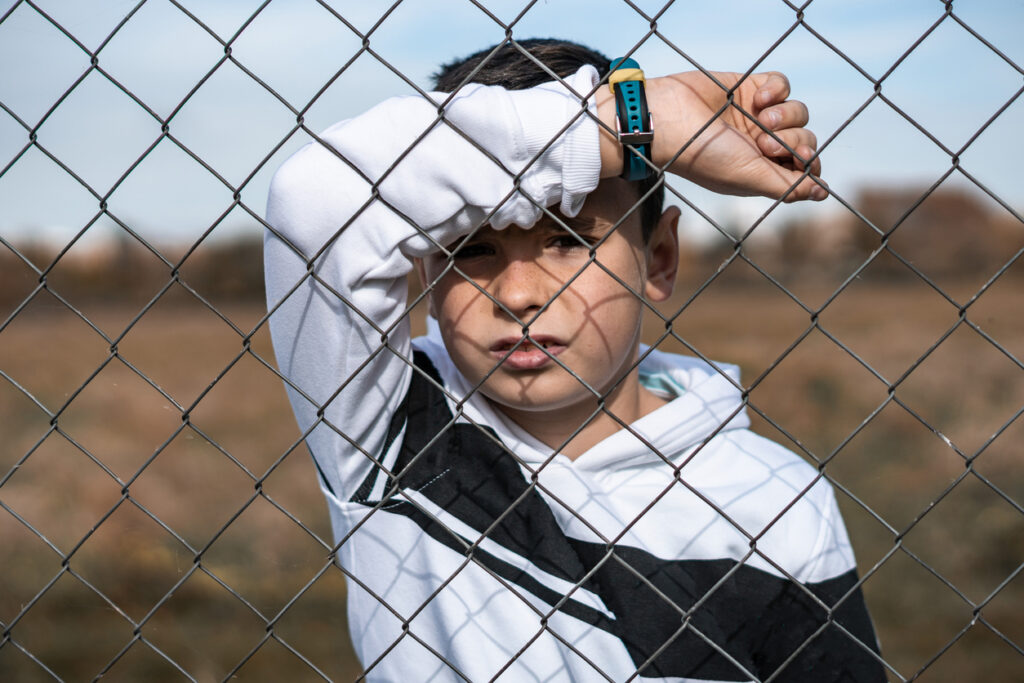Conflict & Displacement
Root Causes of Malnutrition Among
Colombian Children

by Delia Visbal • July 2024
Colombia, a country rich in cultural heritage and natural resources, has been marked by decades of internal conflict and violence. This turmoil has led to the displacement of countless families, significantly disrupting their lives. One of the most tragic consequences of this displacement is the increase in malnutrition among children, posing a severe threat to the country’s future.
Internal conflicts in Colombia, primarily driven by armed groups and drug trafficking organizations, have forced millions of people to leave their homes. According to the United Nations High Commissioner for Refugees (UNHCR), Colombia has one of the highest populations of internally displaced persons (IDPs) in the world, with estimates reaching up to 5.6 million people (DANE).
Conflict leads to internal and external migration. Internal migration occurs in various forms, from rural to urban areas and from one urban area to another within the same city. General examples of urban-to-urban displacement in Colombia can be found in Bogotá’s Ciudadela Simón Bolívar, Medellín’s Comuna 13, and the southwestern area of Barranquilla.
Migration predominantly affects Afro-descendant and indigenous children. The Pacific coast, especially the Urabá subregion of Chocó and Antioquia, Cauca, Caquetá, and on the Atlantic coast, the areas now known as southern Bolívar, Magdalena Medio, Montes de María, and Alta Guajira, are the regions where this phenomenon is most prevalent.
The Impact of Internal Conflict on Children
Displacement disrupts family bonds, causing children to lose their homes and live with extended or single-parent families. A child living with a relative who already has their own children and other obligations is unlikely to receive the same care and love as they would from their own parents. Additionally, many of these substitute homes experience domestic violence, leading to mistreatment and even sexual abuse.
The Relationship Between Displacement and Malnutrition
The correlation between displacement and malnutrition in Colombia is evident. Malnutrition results not only from the immediate lack of food but also from long-term disruptions in food security and healthcare services. According to NEACOL (New England Association for Colombian Children), there was a 14.29% increase in cases of acute malnutrition among children under five between 2022 and 2023. This increase is attributed to the combined effects of displacement, ongoing violence, and the economic hardships faced by displaced families.
Food Insecurity
Displacement strips families of their homes and livelihoods. Many displaced families end up in overcrowded urban areas or makeshift settlements without access to basic services and where food insecurity is already prevalent. The shortage of nutritious food is also a direct consequence of the loss of land, essential farming tools, disrupted supply chains and the destruction of agricultural infrastructure caused by ongoing conflicts. Agricultural activities are a primary source of food and income for many rural families and the displacement leaves these families dependent on limited and often unreliable humanitarian aid.
Loss of Essential Healthcare Services
Healthcare services in conflict zones of Colombia are inadequate or completely absent. Displaced children are particularly vulnerable as they lack access to miss out on essential healthcare services, including vaccinations and regular medical check-ups. According to the World Food Programme (WFP), malnutrition rates among displaced children are alarmingly high, with many suffering from both acute and chronic malnutrition.
Education
Displaced children often experience disruptions in their education, further limiting their access to nutritional programs typically provided in schools. The lack of stable housing and clean water also contributes to the spread of diseases that can worsen malnutrition. The cyclical nature of displacement and malnutrition creates a dire situation where children’s physical and cognitive development is severely affected, leading to long-term consequences for their health and well-being.

Forced Child Recruitment
The forced recruitment of young children by armed groups is another root cause of malnutrition. Besides being deprived of education and the joys of childhood, these children are forced to work and fight against state forces, often leading to their death.
In conclusion, ongoing internal conflicts and consequent displacement in Colombia have created a humanitarian crisis significantly impacting children’s health. The disruption of livelihoods, combined with limited access to food and healthcare, has led to a worrying increase in malnutrition among Colombian children. Addressing this issue requires comprehensive solutions that include improving security, providing stable housing, ensuring access to healthcare, and implementing sustainable food security programs.
Efforts to mitigate the impact of displacement on malnutrition must be a priority for the Colombian government and international aid organizations. Only through coordinated efforts can we break the cycle of malnutrition and ensure a healthier future for Colombian children.
By addressing the root causes of malnutrition, we can create a brighter future where every child has the opportunity to thrive. Organizations like NEACOL exemplify the power of collective action in combating malnutrition and building healthier, more prosperous communities.
Help us support Colombian children in need. Your contribution will help us continue to work for this cause. Click here to donate.
Thank you for helping us fight Colombian children’s malnutrition.
